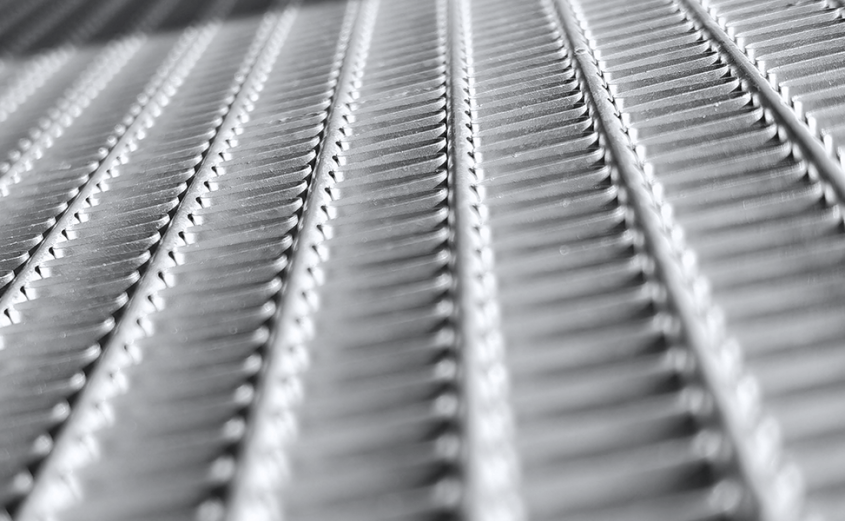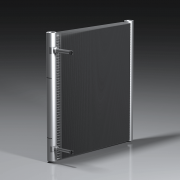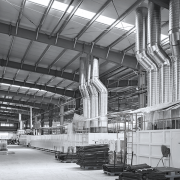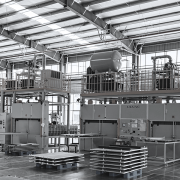Microchannel coils: your best choice for propane applications
Propane (R290) is a naturally occurring hydrocarbon used successfully in industrial refrigeration for many years received attention from designers, contractors, operators, and retailers to reduce greenhouse emissions. An indication of the increasing acceptance of propane is its adoption by many key customers from large supermarket and shopping mall chains to franchise food stores and minimarts at gas stations throughout the world. The latest trend in this market segment is adopting microchannel heat exchangers – condensers and evaporators.
Microchannel heat transfer technology perfectly fits propane cooling applications: small coil volume contributes to minimum refrigerant charge, which is one of the key requirements for indoor installations like display cases, refrigerated cabinets, cooled showcases, food and beverage coolers, dehumidifiers, lab and medical equipment, blast chillers, and more. High duty/size ratio enables compact setup, while the low-noise operation is ensured by lowering fan rotation speeds, thanks to minimum air pressure drops of microchannel coil, with minimum fan power draw. Lightweight and cost-effective but robust and versatile microchannel heat exchangers offer unbeatable advantages and fit perfectly as components of environmentally friendly and energy-efficient cooling equipment. Kaltra has deep expertise in retail cooling solutions, cooperating with leading manufacturers of refrigerated display cabinets and compact coolers, and offers heat exchanging equipment varying by duty and refrigerant charge quantities: up to 8kW for serpentine-type coils, as well as parallel-flow microchannel heat exchangers for larger applications. Both types are suitable for condenser and evaporator use. Our serpentine coils are manifold-less, offering minimum internal volume and lowest possible refrigerant charge per kilowatt duty, and applicable as condensers and evaporators. Multi-circuit serpentine designs are excellently suited to lower refrigerant-side pressure drops. To reduce the refrigerant quantity in parallel-flow propane coils, Kaltra offers multi-port tubes of small width and small-diameter manifolds, further decreasing internal coil volume by 40%. The use of thin tubes also contributes to the lowering of air pressure drops. Typically, a parallel-flow coil of the internal volume of 0.1 liter offers a duty of as high as 3kW, being less than 300x300mm in size. In comparison, a serpentine-type heat exchanger of the same size and output has a volume of as low as 0.05 liter.
|
Finned-pack coil |
Parallel-flow MCHE |
Serpentine-type MCHE | |
|
Heat transfer rate |
Average |
High |
High |
|
Internal volume |
High |
Low |
Very low |
|
Air pressure drop |
Average |
Low |
Low |
|
Tubeside pressure drop |
Low |
Low |
Average |
|
Weight |
High |
Low |
Very low |
|
Corrosion resistance |
Average |
High |
High |
|
Maintenance |
Moderate |
Easy |
Easy |
|
Lifetime |
Average |
Long |
Long |
|
Cost |
High |
Average |
Low |
Heat exchangers intended for use with flammable refrigerants, including propane, undergo special acceptance tests to ensure quality and pressure rating.
To summarize, a key factor when it comes to heat exchanger selection for propane and other flammable mixtures – among all – is the refrigerant charge quantity, and, of course, microchannel coils beat their competitors in this. Other benefits further strengthen MCHE’s positions.
Kaltra supports its customers in Germany, Austria, Italy, France, Switzerland, the UK, and other countries worldwide, providing optimum solutions with its microchannel solutions.
IEC 60335-2-40 standard
A new, landmark revision of the IEC 60335-2-40 standard, which previously limited charge sizes to 334g for A3 refrigerants, including propane, in air conditioning and refrigeration systems in a standard size room, was approved on 29/04/2022 and expected to be published in June.
The new edition enables A3 refrigerants to be used in air conditioning systems with larger charge – for propane, up to 988g – in new equipment designed according to certain additional safety requirements to ensure safety levels as those applicable for equipment using non-flammable refrigerants.








